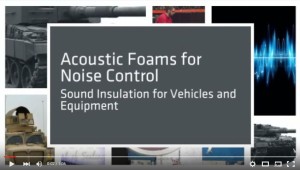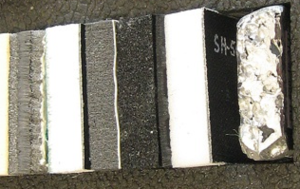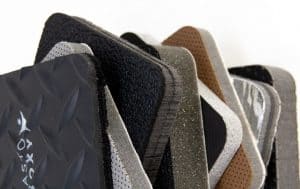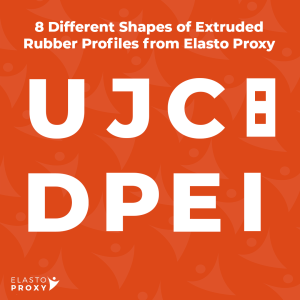
Acoustical foams absorb and dampen sounds. Some of these foam rubber materials also provide flame resistance. Product designers need more than just an acoustic foam, however. They need a custom fabricator who can convert stock materials into a custom insulation solution.
Acoustic foams are used for sound absorption and sound dampening in applications such as military vehicles, commercial trucking, and equipment enclosures. They’re usually made of silicone, urethane, or foam-based melamine. Some acoustical foams offer additional properties, such as thermal resistance or fire resistance. For specialized applications, acoustical foams can be added as layers within “insulation sandwiches” that also contain fillers, adhesives, and barrier materials.
How to Choose Acoustic Foams
Buyers and designers need to consider many different factors when sourcing acoustical foams. Material properties are important, but so is sound absorption across specific frequencies, compliance with published standards, and product specifications such as color, density, and sheet size. Standard acoustic foams are supplied in rolls or sheets, but buyers and designers that choose custom fabrication can achieve tight tolerances, avoid material waste, and source ready-to-install products.
Let’s look at all of the factors that buyers and designers need to consider.
Compound Selection

Silicone foams and silicone foam composites combine acoustic insulation with outstanding temperature resistance. Silicones that are cast onto specialty fabrics may also resist fire, tearing, or abrasion. Acoustical-grade urethane foams and urethane foam composites provide excellent resistance to heat, moisture, and chemicals. Melamine foams for acoustic insulation are extremely lightweight and can resist smoke, heat, and low flame propagation. Esters and polyurethanes are also used for sound dampening.
Sound Insulation and Frequencies
Acoustic insulation can block high frequencies, low frequencies, or a specific range of frequencies. When comparing different acoustical materials, technical buyers and designers should note the sound transmission class (STC), sound reduction index (SRI), and noise reduction coefficient (NRC). Typically, STC is used with indoor acoustic insulation. SRI is highly dependent on sound frequency, and measures sound reduction in terms of decibels (dB). NRC is a common measure of sound absorption.
Published Standards
Published standards for acoustic insulation vary by industry and application. For example, the acoustical foams that are used with the HVAC units on passenger rail cars often need to meet specific flame, smoke, and toxicity (FST) standards such as Bombardier 800-C. ASTM E 84 also provides applicable fire ratings within designated classes. Acoustical foams that resist microbial growth may meet requirements established in ASTM G21 or UL 181, section 11.
Acoustic Foam Cutting

Industrial buyers and product designers that choose custom fabrication can source acoustic insulation that’s cut-to-size with speed and precision. Here at Elasto Proxy, our water jet cutter makes fine, fast cuts without long lead times or tooling charges. Water jet cutting is ideal for acoustic foams and can produce clean edges and perfect 90-degree corners. The machine’s Ingersoll-Rand® heads direct jets with 50,000 pounds-per-square-inch (psi) towards an X-Y axis table with a 5’ x 10’ cutting surface.
Adhesive Backings
Elasto Proxy’s custom fabrication capabilities include taping for temporary or permanent fastening. By applying a pressure-sensitive adhesive (PSA) to acoustical foam, our production specialists can create parts that arrive ready-to-install. Bonding acoustic foam to surfaces such as vehicle ceilings and enclosure walls also reduces installation time and supports operational flexibility. Your installers can save time on the assembly line, and replace acoustic insulation while on the road or in the field.
Custom Insulation Sandwiches
Elasto Proxy also builds insulation sandwiches that can meet all of your application requirements. Typically, these sandwiches or structures consist of layers of acoustic insulation, thermal insulation, fillers, barrier materials, and adhesives. Acoustic insulation can also include films or metallized facings that impart additional properties. Military vehicles provide an excellent example of how custom insulation can be used. To learn more, download the white paper from Elasto Proxy.










